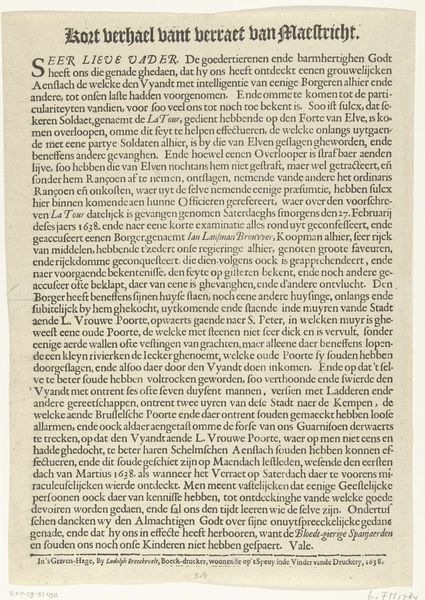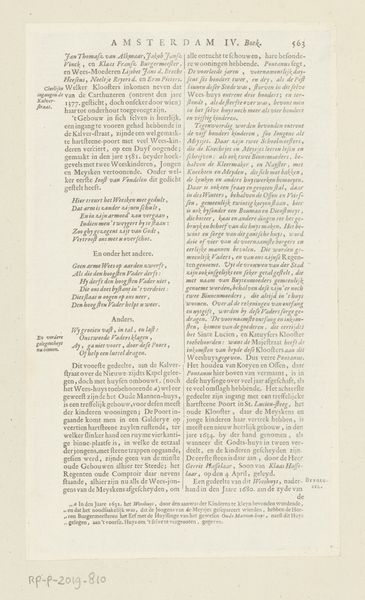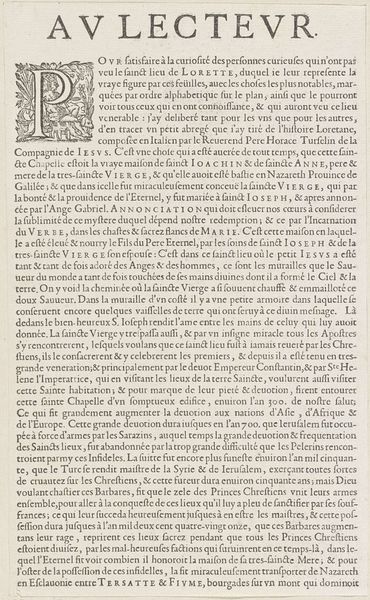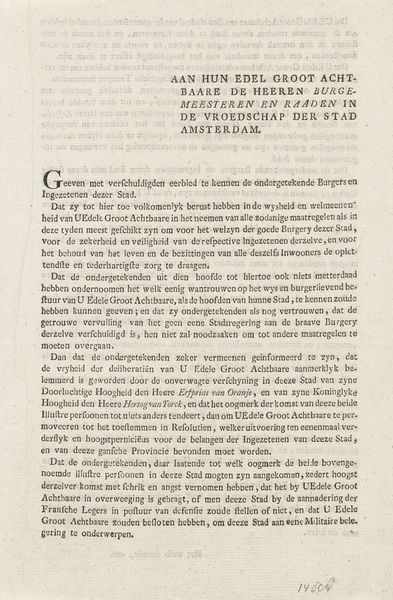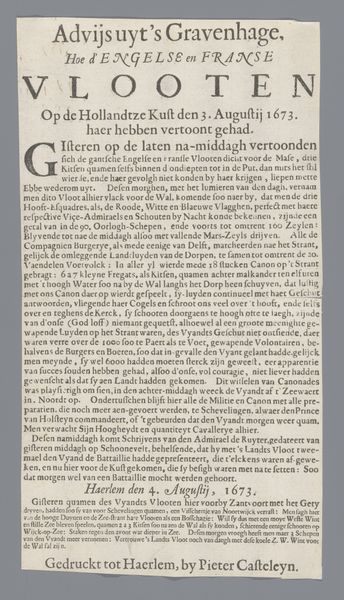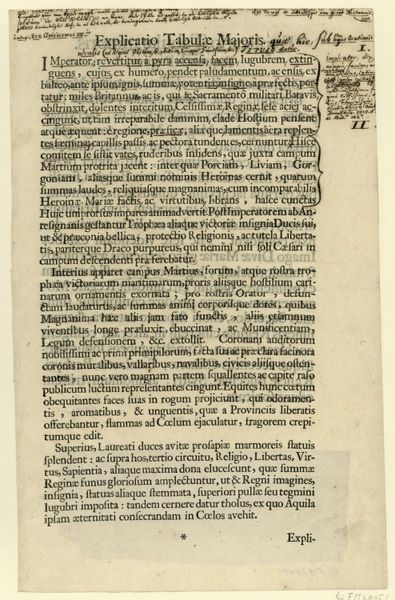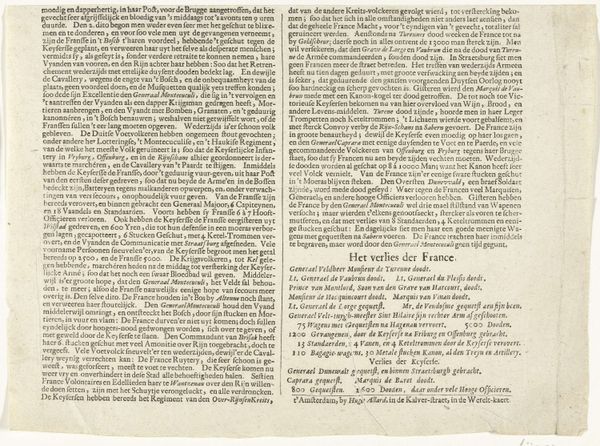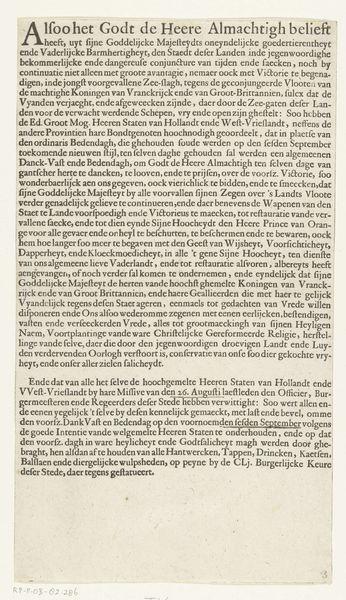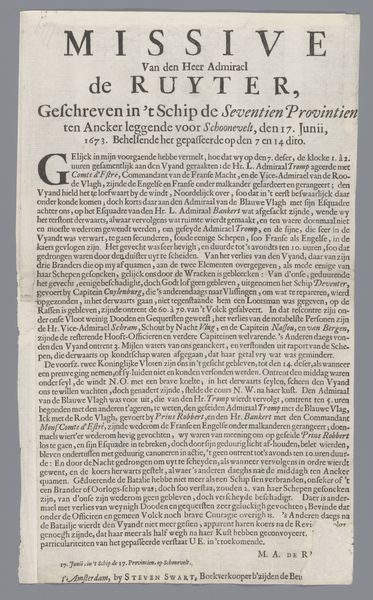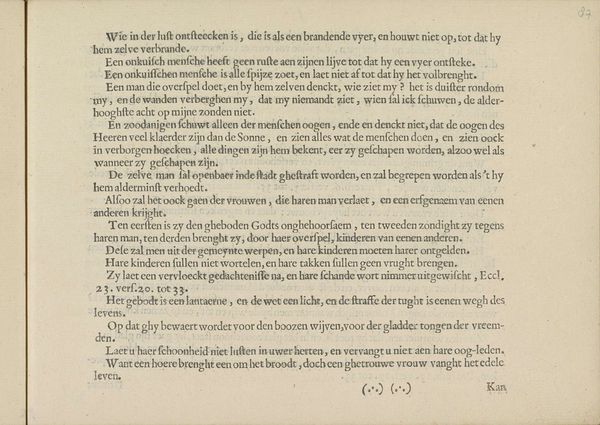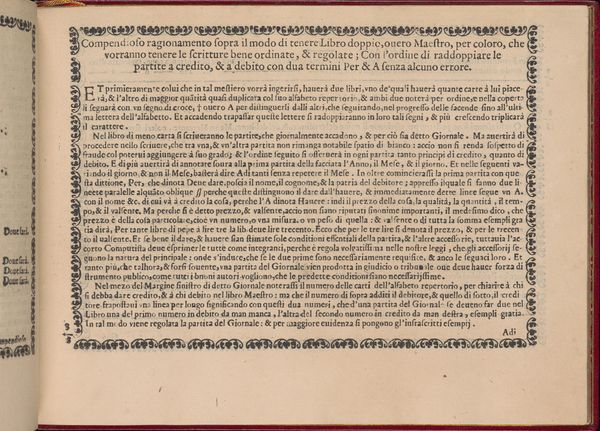
Uitschrijving door de Staten van Holland en West-Friesland van een dankdag bij terugkeer van de provincies Gelderland, Utrecht en Overijssel in de Unie, 1675 1673
0:00
0:00
print, textile, typography
#
dutch-golden-age
# print
#
textile
#
typography
#
islamic-art
Dimensions: height 270 mm, width 142 mm
Copyright: Rijks Museum: Open Domain
Curator: This piece, "Uitschrijving door de Staten van Holland en West-Friesland van een dankdag bij terugkeer van de provincies Gelderland, Utrecht en Overijssel in de Unie, 1675" is actually dated 1673. It's a print, text predominantly, a form of typography, and it lives in the Rijksmuseum. It evokes a sense of formality, of state decree, yet also hints at a moment of immense relief and gratitude, like a collective sigh after a period of turmoil. What stands out to you? Editor: I’m struck by the density of the text; it's almost overwhelming. How do we unpack a work that is so explicitly tied to language and, presumably, political circumstances of its time? Curator: Exactly. The "political circumstances" are critical. Think of it as a document emerging from a society deeply enmeshed in religious and political conflict. It's a declaration, but also an act of national healing after those provinces returned to the Union. How might contemporary notions of national identity be challenged, or reinforced, when considering texts like this? Editor: So it is both a statement of political power and religious significance at that time? Curator: Precisely. What happens when we consider the potential readership, and how the concept of "union" was conceived during this time of immense religious and cultural reformation, particularly its potential exclusion of some communities. Editor: I suppose looking at the context beyond the "official" story gives me an understanding about this proclamation’s effects and meanings for ordinary people. Curator: Exactly. Art isn't isolated from the world that surrounds it. When we look to those critical, societal factors that go into the making of an artwork, it teaches us something more broadly relevant. Editor: This piece is less a document and more a moment in time that should be seen as enmeshed in cultural forces.
Comments
No comments
Be the first to comment and join the conversation on the ultimate creative platform.
